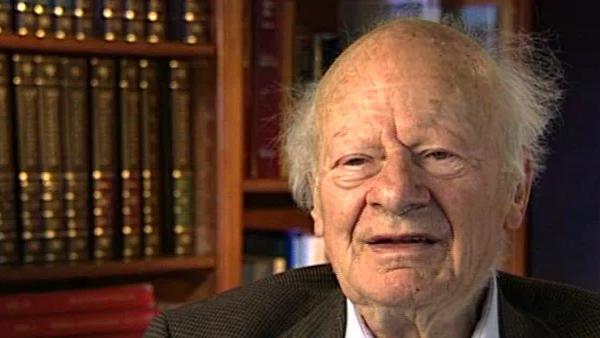NEXT STORY

How the Kamiokande experiment worked
RELATED STORIES

NEXT STORY

How the Kamiokande experiment worked
RELATED STORIES


|
Views | Duration | |
|---|---|---|---|
| 141. The formation of binary neutron stars | 232 | 01:52 | |
| 142. The statistics of masses of neutron stars | 226 | 01:57 | |
| 143. An upper limit to the mass of a neutron star | 271 | 01:47 | |
| 144. Condensation of K-minus mesons | 212 | 02:59 | |
| 145. How to observe a neutrino | 237 | 02:35 | |
| 146. Trying to observe neutrinos from the sun | 218 | 04:07 | |
| 147. Ray Davis's method of proving neutrinos come from the sun | 205 | 01:55 | |
| 148. How the Kamiokande experiment worked | 211 | 02:26 | |
| 149. Comparing the Kamiokande and Homestake experiments | 284 | 03:01 | |
| 150. Stanislav Mikheyev and Alexi Smirnov's theory | 236 | 02:54 |


You put a counter into that tank, that would be totally useless. No, instead of that, you collect the argon which is a rare gas and a noble gas does not interact chemically and remains a gas, while your carbon chloride is a liquid, and so you collect the argon gas. How do you do that? You flush it with helium, which is a much more available noble gas, you pump that through the tank and out comes the helium together with the argon, and then you condense the argon by freezing it, and fill a counter with that and then you observe counts in that counter. Well, what do you observe? You observe a few counts a month coming from this very elaborate experiment. And so Davis proved in this way that indeed neutrinos do come from the sun and this proved maybe even better by the Japanese experiment which was done in an old mine in Japan in Kamioka, it's known as the Kamiokande Experiment, Kamioka Neutron Detector Experiment. That used a different method.
The late German-American physicist Hans Bethe once described himself as the H-bomb's midwife. He left Nazi Germany in 1933, after which he helped develop the first atomic bomb, won the Nobel Prize in Physics in 1967 for his contribution to the theory of nuclear reactions, advocated tighter controls over nuclear weapons and campaigned vigorously for the peaceful use of nuclear energy.
Title: Ray Davis's method of proving neutrinos come from the sun
Listeners: Sam Schweber
Silvan Sam Schweber is the Koret Professor of the History of Ideas and Professor of Physics at Brandeis University, and a Faculty Associate in the Department of the History of Science at Harvard University. He is the author of a history of the development of quantum electro mechanics, "QED and the men who made it", and has recently completed a biography of Hans Bethe and the history of nuclear weapons development, "In the Shadow of the Bomb: Oppenheimer, Bethe, and the Moral Responsibility of the Scientist" (Princeton University Press, 2000).
Tags: Kamioka, Homestake experiment, Raymond Davis
Duration: 1 minute, 56 seconds
Date story recorded: December 1996
Date story went live: 24 January 2008